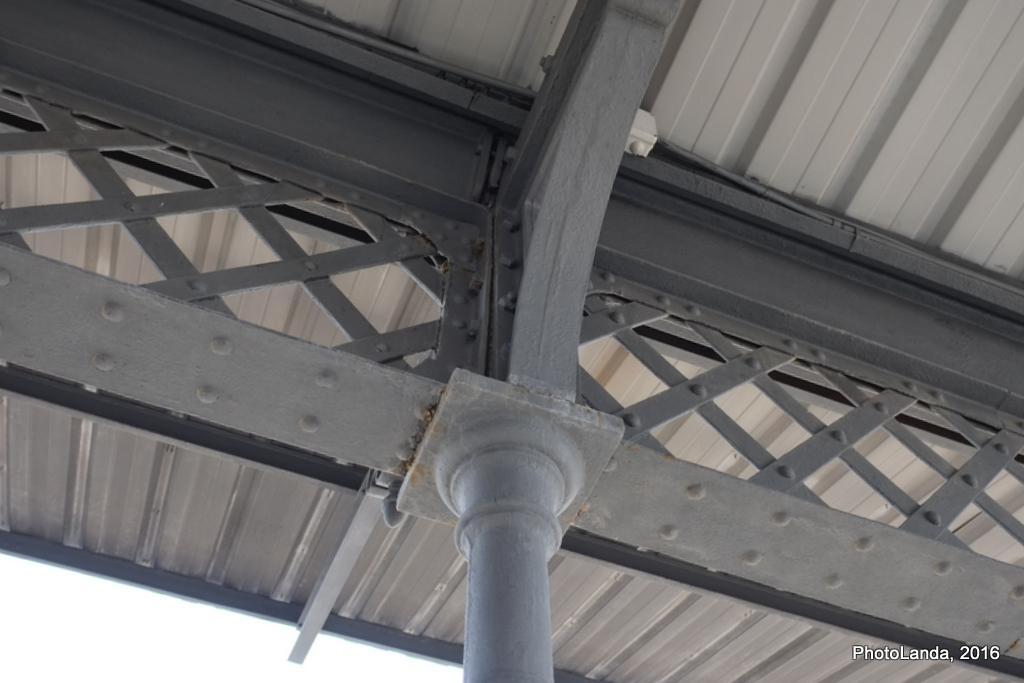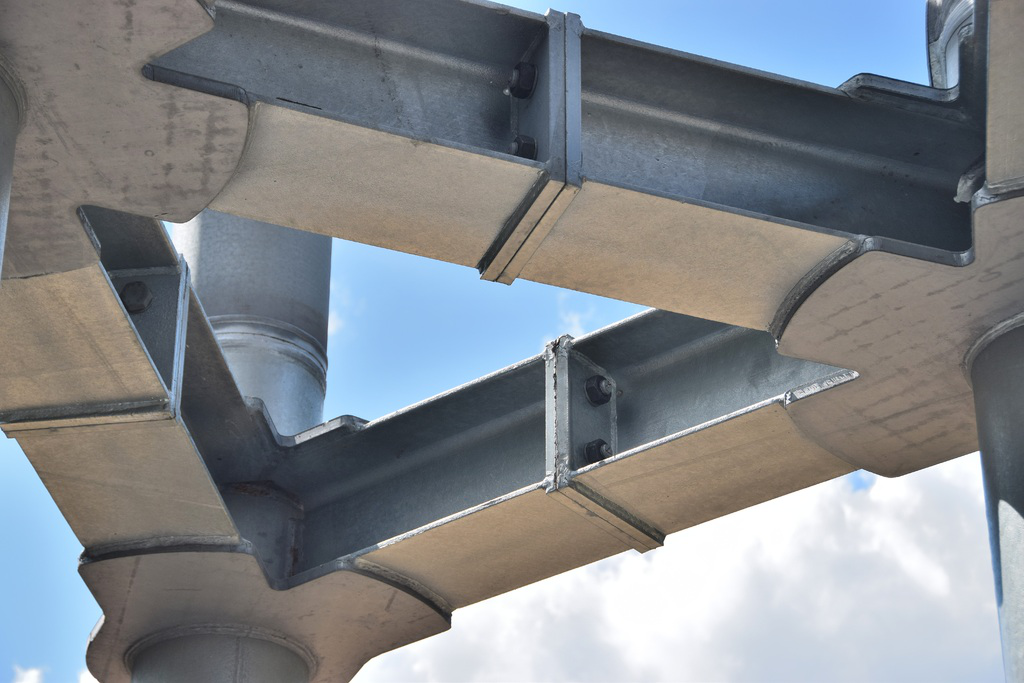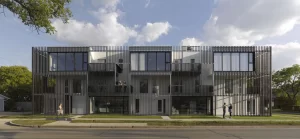By: Nancy Vasquez
Steel structures have long been the backbone of modern engineering, offering durability and strength. However, ensuring their longevity requires more than just sound initial construction; it demands consistent care and attention to detail.
Proper steel structure maintenance is the key to guaranteeing the longevity and operability of these metallic giants. We’ll explore seven essential practices that can extend the steel structure lifespan. From regular inspections to comprehensive surface preparation, these methods are crucial to safeguarding your investment.
1. Bolted Joint Inspection
Bolted joints are commonly used in steel structures to connect various components, and their proper inspection is essential to identify and address any issues that may arise over time. Inspecting bolted joints in steel structures is crucial for ensuring the structural integrity, safety, and longevity of the overall system.
- Begin with a visual inspection of the entire steel structure, focusing on bolted connections. Look for signs of corrosion on the bolts, nuts, and surrounding areas. Corrosion can weaken the material and compromise the joint’s integrity.
- Verify the tightness of bolts using a torque wrench. Assess if there is any relative movement between connected elements, as this may indicate loose or damaged bolts.Loose bolts can lead to structural instability.
- Check for past inspections, repairs, or replacements in maintenance records.
- Concentrate on areas exposed to environmental conditions, such as outdoor structures or those in corrosive environments. Check for the effectiveness of corrosion protection measures, such as coatings or galvanization.
- Check for galvanic corrosion due to dissimilar metals in contact. Install insulating materials between dissimilar metals to prevent galvanic corrosion.
If any issues are identified during the inspection, plan and implement repairs or replacements promptly. Establish a regular inspection schedule based on the structure’s usage, environmental conditions, and industry recommendations. A known standard is to inspect bolted joints every two years. Bolts are the backbone of structural integrity, and monitoring their condition is essential for a steel structure’s long life.

2. Visual Inspection of Welded Elements
Welded elements play a vital role in the strength of steel structures. Visual inspection of welded elements is a fundamental part of steel structure maintenance, ensuring the structural integrity and safety of the overall system. This inspection involves a careful examination of welded connections and joints to identify any visible defects, discontinuities, or signs of deterioration. Conduct a visual inspection of 100% of the welded elements to ensure they are in good condition, by at least performing the following activities:
- Begin with a visual examination of the overall welded structure, focusing on weld joints and connections. Check for surface irregularities, such as cracks, porosity, spatter, or undercut, which can affect the weld quality.
- Assess the weld profiles, including bead shape, size, and uniformity, in accordance with the design specifications. Verify that the weld reinforcement is within acceptable limits.
- Ensure proper alignment of the welded components, as misalignment can lead to stress concentrations.
- Look for any visible cracks in the weld or the surrounding base metal.
- Check the condition of any protective coatings applied to the welded surfaces.
- Measure the size and length of the welds to ensure they comply with design specifications.
- Compare the observed welds with the requirements specified in the Welding Procedure Specifications.
Adhere to industry standards and guidelines for weld quality and repair procedures. Early detection of issues can prevent major problems down the road. Establish a regular inspection schedule based on the structure’s usage, environmental conditions, and industry recommendations.
3. Avoid Overloading
Avoiding overloading is crucial for the maintenance and long-term performance of steel structures. Overloading occurs when a structure is subjected to loads that exceed its designed capacity. This can have severe consequences for the structural integrity, safety, and overall functionality of the steel elements. Here are some guidelines of how to avoid overloading for steel structure maintenance:
- Provide training and information to users, operators, and maintenance personnel about the importance of adhering to load limits.
- Conduct regular inspections of the steel structure to identify signs of overloading, such as deformations, cracks, or stress concentrations.
- Employ visual inspections and non-destructive testing techniques to assess the condition of critical components.
- Establish and enforce weight restrictions for vehicles, equipment, or materials that will be placed on or transported across the structure.
- Consider structural upgrades or reinforcements if the load requirements have changed or if the structure is expected to handle heavier loads in the future.
- Clearly display load limits and warnings through signage at access points.
- Provide ongoing education and training programs for personnel involved in the operation and maintenance of the structure.
By understanding design specifications, implementing monitoring systems, and promoting a culture of safety and compliance, you can effectively avoid overloading and ensure the long-term stability and safety of the steel structure. Engaging with qualified structural engineers and professionals is also crucial in developing and implementing effective strategies for load management.
4. Periodic Level Checks
Performing periodic level checks for steel structures is essential to ensure their stability, alignment, and overall safety. Level checks help identify any deviations from the intended design alignment and prevent issues related to settlement, settlement differentials, or structural movements. Below is a comprehensive explanation of how to perform periodic level checks for steel structure maintenance:
- Identify critical areas for level checks, including foundation points, columns, beams, and other load-bearing elements.
- Establish control points based on the structure’s design and the specific points that are crucial for maintaining alignment.
- Establish a baseline by taking initial level measurements when the structure is first constructed or after significant modifications.
- Take level measurements at multiple points across the structure to get a comprehensive understanding of its alignment.
- Compare current level measurements with baseline data to identify any deviations or changes over time.
- Establish thresholds for acceptable deviations, and take corrective action if measurements exceed these thresholds.
- If significant deviations are observed, engage qualified structural engineers to perform a detailed assessment and recommend appropriate remedial actions.
Conduct level checks on a scheduled basis, considering factors such as the structure’s usage, environmental conditions, and industry recommendations. Performing periodic level checks is a proactive measure to maintain the alignment and stability of steel structures. Regular inspections, accurate measurements, and prompt actions in response to any deviations contribute to the overall safety and longer steel structure lifespan.

5. Notify Manufacturers of Modifications
When making modifications to a steel structure, it’s crucial to notify the manufacturer to ensure that the changes align with the original design specifications and meet safety standards. But why is it so important?
- Manufacturers design steel structures with specific parameters and engineering considerations. Informing the manufacturer ensures that the modifications align with the original design intent and specifications.
- Manufacturers specify materials based on their compatibility with the structural design. Changes in materials should be reviewed to maintain the desired performance.
- Many steel structures come with warranties. Modifying the structure without notifying the manufacturer may void warranties. Notifying the manufacturer allows for discussions on warranty implications and whether modifications can be made while preserving warranty coverage.
- Steel structures are often designed to comply with local building codes and regulations. Modifications should adhere to these codes to ensure compliance with safety standards.
- Manufacturers can conduct risk assessments to identify potential issues associated with the modifications and provide guidance on risk mitigation.
Proper communication and collaboration with the manufacturer are critical when making modifications to a steel structure. Following a systematic process, including thorough documentation, consultation with structural engineers, and obtaining formal approvals, helps ensure that the modifications are carried out safely and in compliance with the original design intent. Regular and transparent communication throughout the process contributes to a successful collaboration between the owner, engineers, and the manufacturer.
As a conclusion on Steel Structure Lifespan
An effective steel structure maintenance strategy involves proactive measures, regular inspections, collaboration with qualified professionals, and adherence to industry standards. By addressing bolted joints, visual inspections, load considerations, and modifications with diligence, owners can promote the structural health, safety, and longevity of their steel structures. Ongoing communication with manufacturers and periodic assessments contribute to the overall success of a comprehensive maintenance plan.
It’s important to recognize that steel structures play a pivotal role in our everyday lives, from supporting towering skyscrapers and bridges to housing vital industrial equipment. As such, their resilience and functionality are paramount. Neglecting their maintenance can lead to a cascade of issues, including structural deterioration, decreased safety, and substantial financial burdens.
By implementing these five practices and prioritizing regular inspections and maintenance, you can significantly extend the steel structure lifespan. Protect your investment and ensure the continued operability and safety of these invaluable structures. Proper steel structure maintenance is the key to preserving the legacy of steel in engineering.

